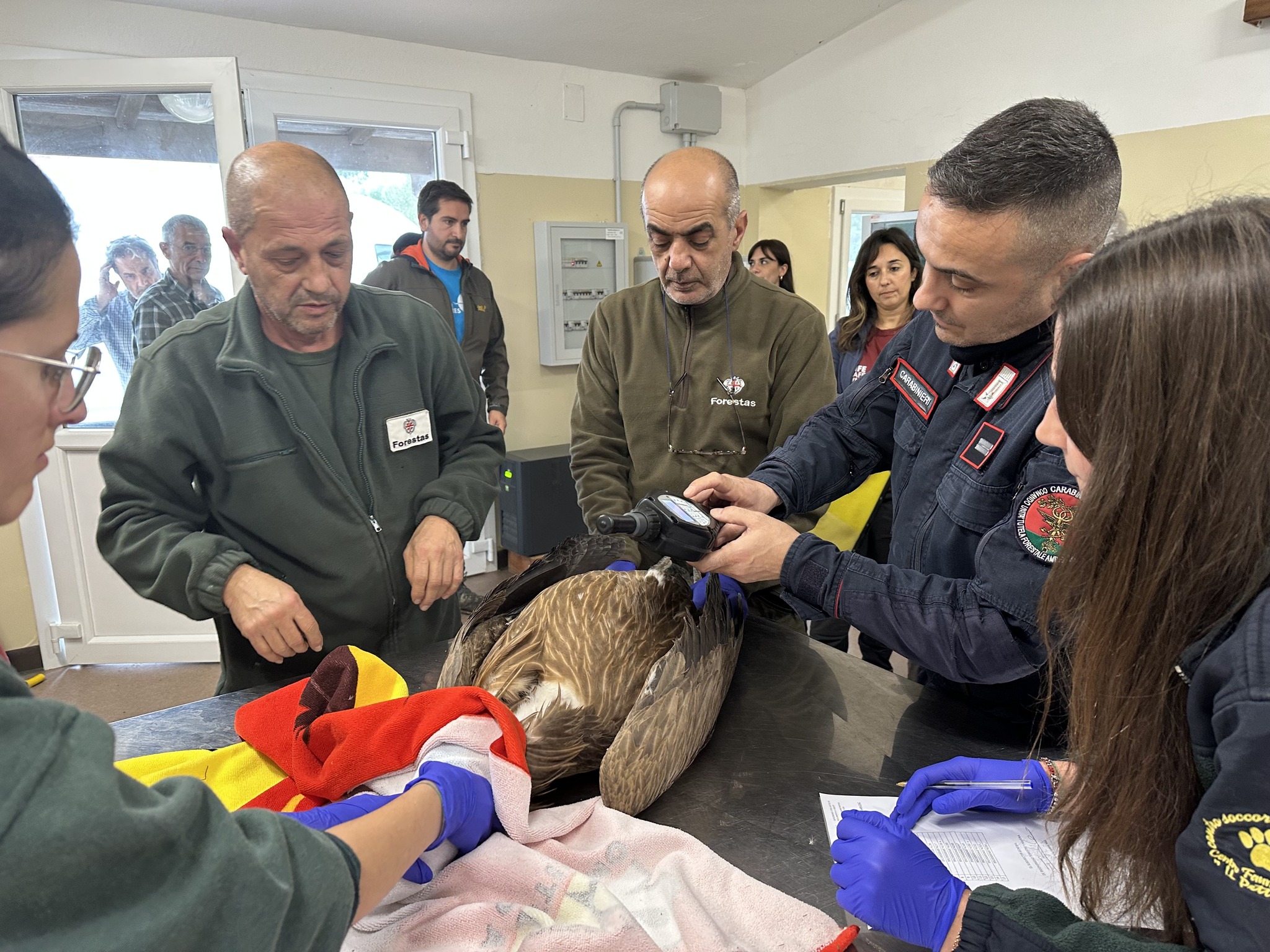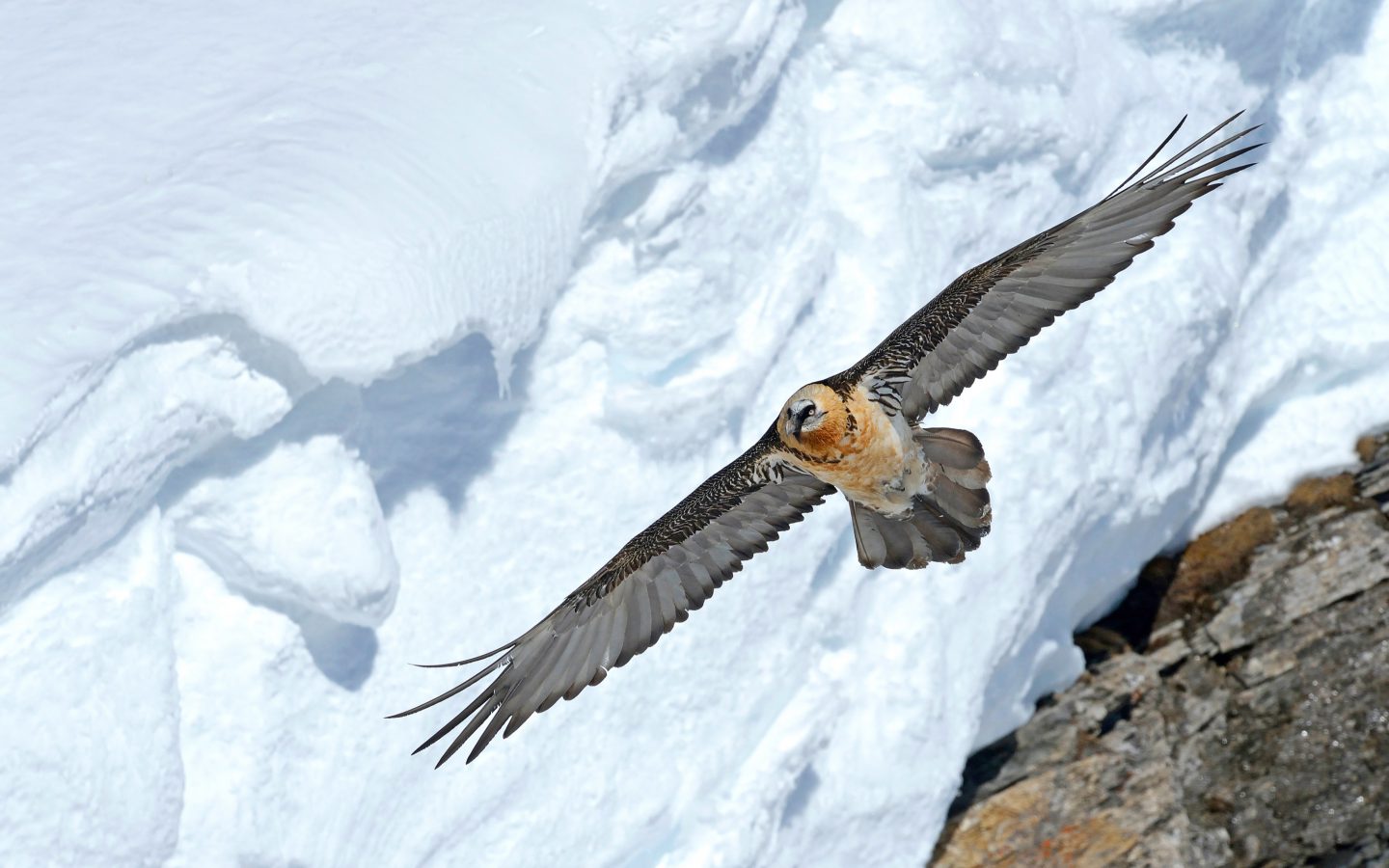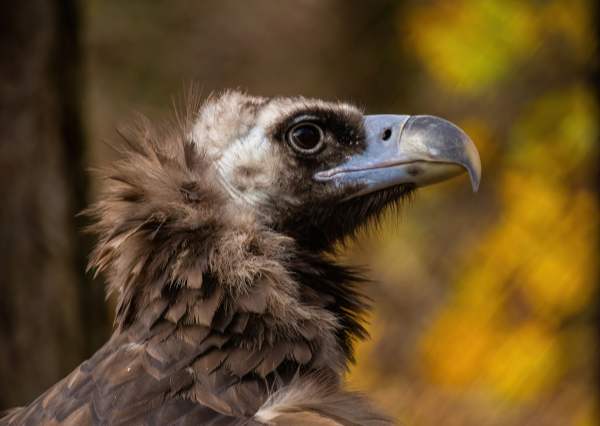One instrument to monitor vultures’ movements, behaviour and overall condition: the GPS tracker. It is one of the most powerful tools used not only to monitor individuals, but to shape conservation actions. Let’s take a closer look at how the process works and why organisations like the Vulture Conservation Foundation have been investing so much in it.

One tool to answer many questions
Vulture species around the world are mostly declining due to poisoning, habitat loss, collisions with energy infrastructures, and poaching. To tackle these threats, and implement effective and long-lasting measures, we need to understand vultures’ habits, ecology and where they are most at risk. And what better way to do so than following different individuals in their daily lives, recording multiple data at the same time?
GPS or satellite transmitters record several information about the tagged individual: its position, temperature, movement – including direction, speed and altitude of flight. They also record environmental information. From these data, researchers can not only map vultures’ movements and daily habits, like preferred feeding and resting spots, but record their behaviour. In fact, it is possible to understand when a vulture is feeding, or when it is in distress, based only on the interpretation of the information given by the transmitter.
Thanks to tracking, scientists have been able to:
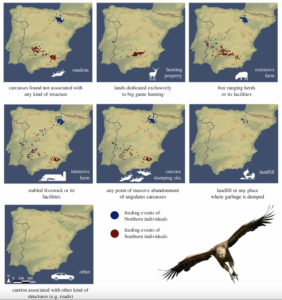
- Understand movement patterns: migration routes, feeding grounds, and roosting sites.
- Identify high-risk areas: pinpoint locations where vultures face threats like poisoning, electrocution, or habitat destruction.
- Monitor reintroduced and rehabilitated vultures and ensure that they are thriving.
- Combat criminal wildlife poisoning: vultures often act as sentinels because they are among the first to feed on a carcass and eventually show signs of poisoning.
- Rescue individuals in distress: sick or injured vultures move differently than healthy ones, and mapping their position helps speed up the rescue process.
In summary, data from transmitters help save individuals vultures life and shape their species conservation worldwide.
To each their own: choosing the right tracker and system
GPS tracking involves fitting vultures with lightweight devices that send data back to researchers, allowing them to monitor vultures in real time or retrieve information after some time. Different types of tracking methods include:
- Satellite GPS tags: transmit location data remotely though satellites, allowing near real-time monitoring. This technology is quite expensive, but very handy when tracking vultures in very remote areas.
- GPS/GSM tags: use the same network our mobiles use to send data. These tags are less expensive and used more often but can – very rarely – lose the signal. At the Vulture Conservation Foundation, we use GPS/GSM tags.
Researchers started fitting GPS tags on big birds, such as vultures, in the early 90s. Over the years this versatile technique saw an exponential growth. Modern tags are equipped with tiny solar panels that recharge the batteries, making them lightweight and suitable also for some smaller species. These tags can last several years, following the birds for 3-4 years or even longer.
From the vulture point of view
Not all vultures can be fitted with a GPS tracker. Each time a vulture is selected for tagging, a thorough assessment of the bird’s condition is done by a team of specialists. Vultures should be healthy and have proper weight. As a rule of thumb, the combination of tracker and harness should not weight more than 5% of the bird body weight. With healthy vultures this rule is always guaranteed because the heaviest tag nowadays weights around 50g, and the lightest vulture species (Egyptian vulture – Neophron percnopterus) weights 1.6-2.1 kg.
Capturing adult vultures is not easy and there are some risks involved; therefore, most vultures tagged in the wild are juveniles in the nest just before they fledge. In translocation projects, vultures are tagged while in captivity, before they are released into the wild making the tagging process less stressful for the vulture and easier for the researchers. Tagging itself is a painless process and it involves fitting the vulture with a lightweight Teflon harness, secured on their back. The harness is flexible enough to accommodate for weight fluctuations, and it goes around the vulture’s legs and back, allowing the wings full range of motion.

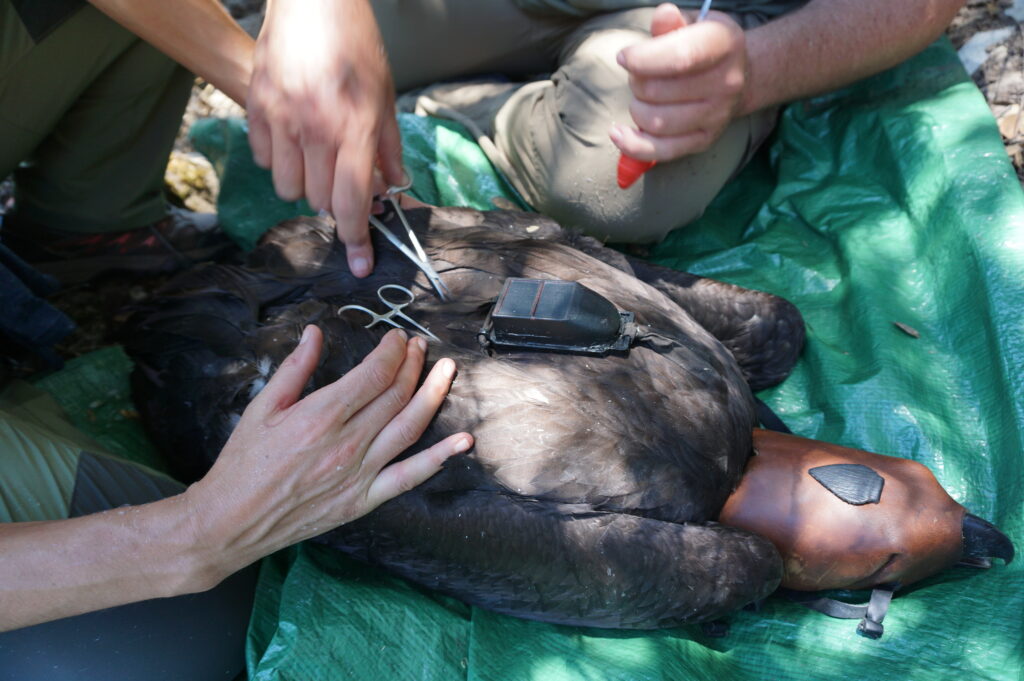

Challenges of the job
Despite its many benefits, GPS tracking also comes with challenges.
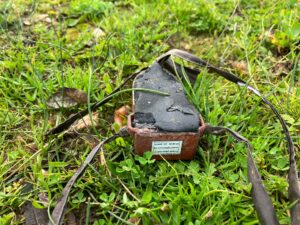
The first one is lost tags: sometimes the vulture damages the harness or simply loses the tag itself. In this case, it may be possible to retrieve the tag, but the chance of monitoring that specific individual is likely lost forever.
Another challenge depends on the performance of the tags. Although they’re robust pieces of technology, sometimes they malfunction, losing power from the solar panels or contact with the network. Most of the time these problems are only temporary. Unfortunately, if the damage is permanent, it is extremely rare that someone can capture a healthy vulture and fix its tag.
Lastly, conservation measures require a large amount of data to be supported and implemented, as the movements of a few individuals rarely are representative of the threatened population. Therefore, many vultures from different populations need to be tagged over time, and intense data analysis must be done to translate all the generated information into knowledge that can inform practical measures.
Lives and stories, not just dots on a map
GPS tracking has revolutionized vulture conservation, offering a window into vultures’ lives and the threats they face.
Thanks to our team, at the Vulture Conservation Foundation, and to our partners, we now have detailed data on the movements of hundreds of vultures across Europe. For us, every dot on the map is not just a location, it’s an individual story with its struggles and successes. It is also an irreplaceable chance to better understand and protect these vital scavengers.
